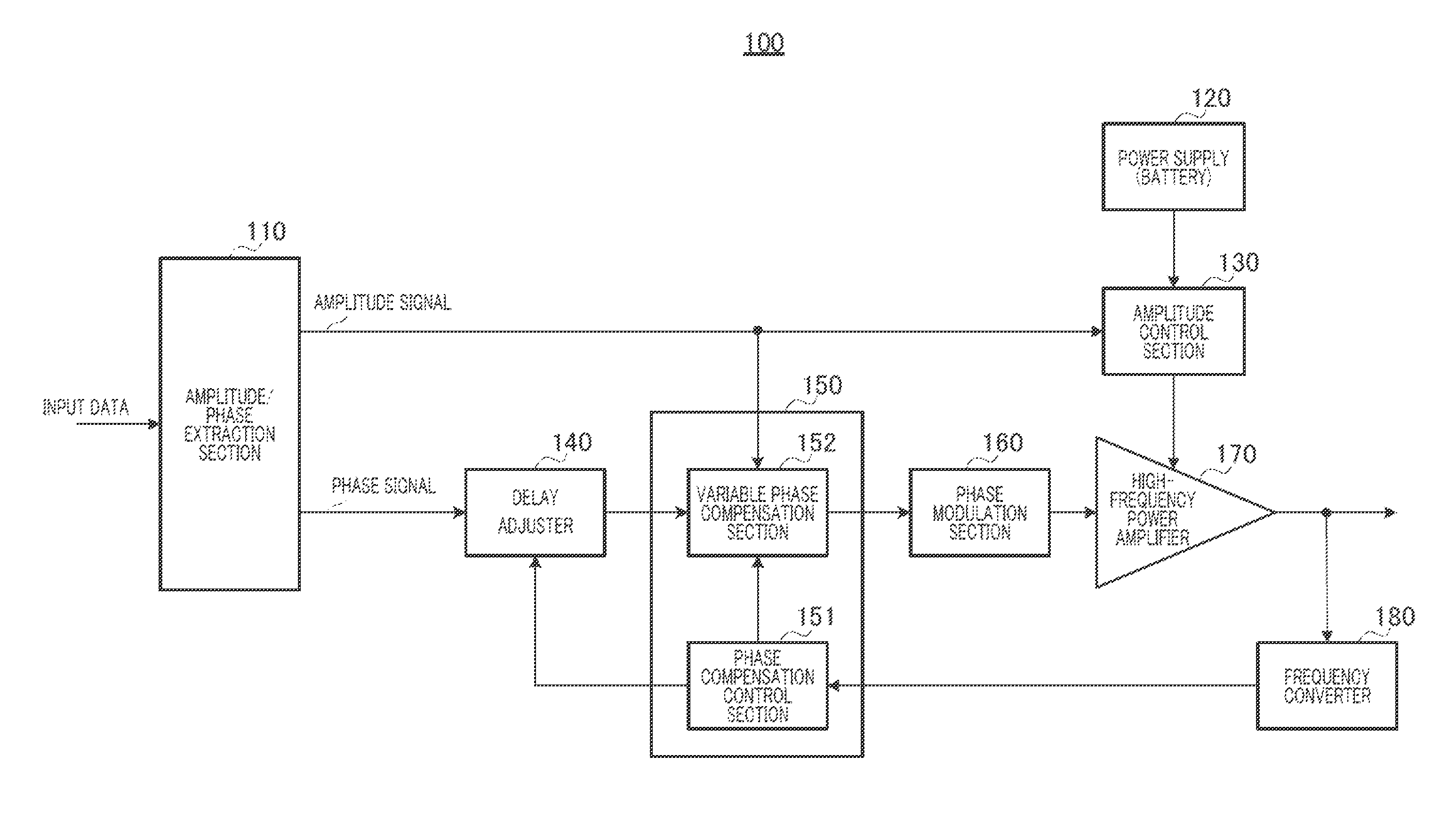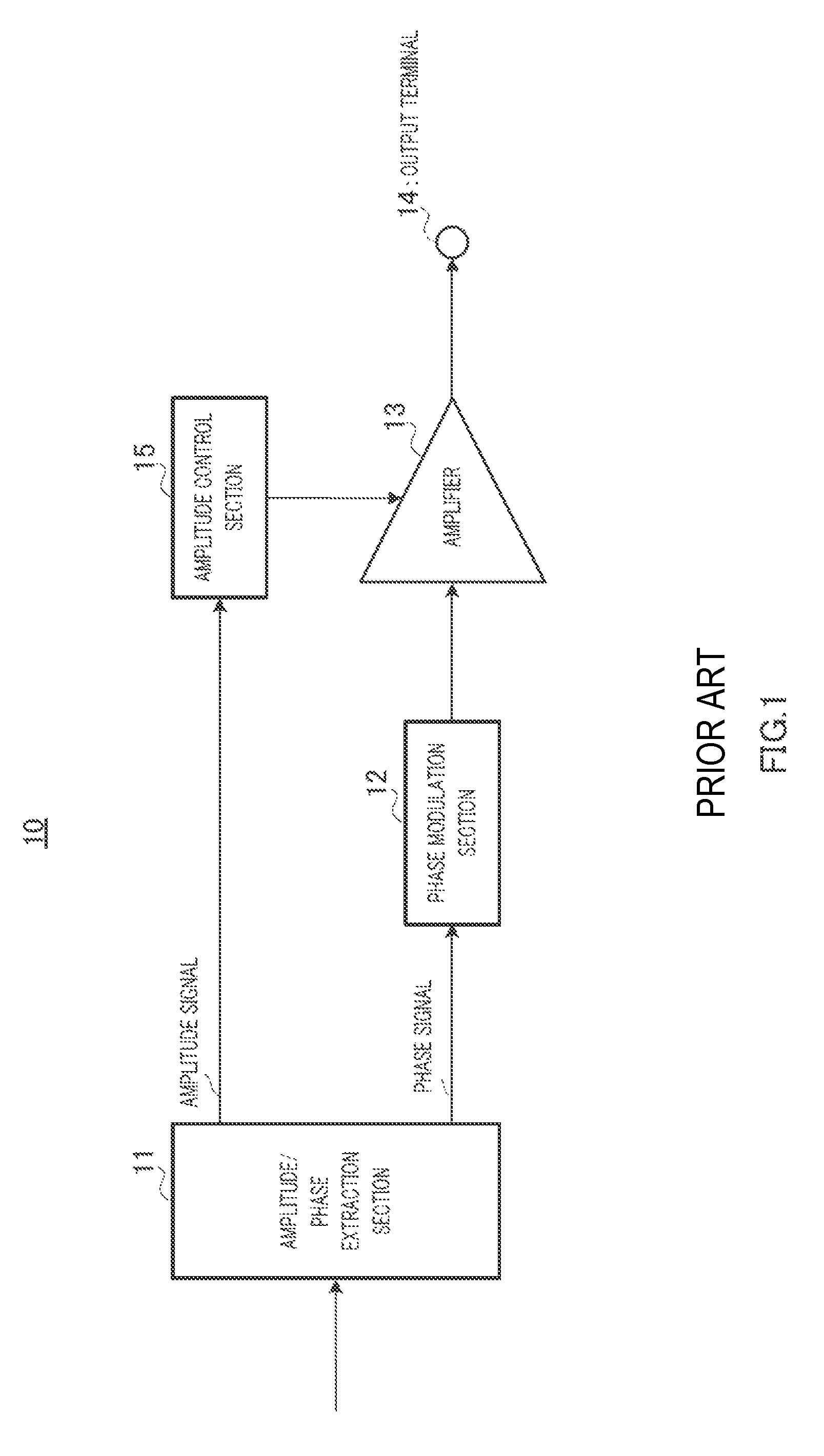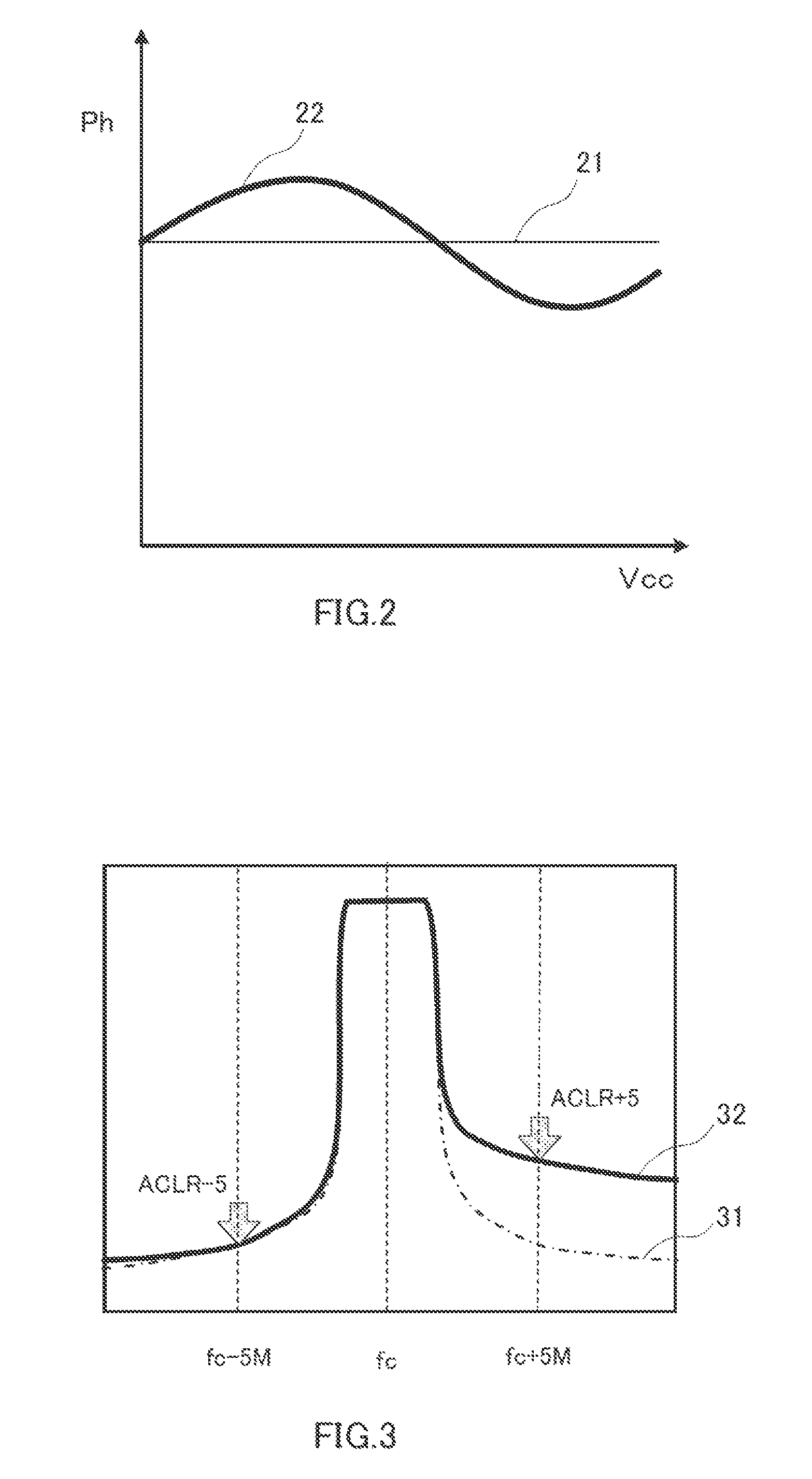Polar modulation transmission circuit and polar modulation transmission method
a transmission circuit and polar modulation technology, applied in the direction of modulation, amplitude to angle modulation conversion, transmission, etc., can solve the problems of radio performance degradation such as aclr (adjacent channel lockage power ratio) in the transmitter, and achieve the effect of suppressing the degradation of signal quality
- Summary
- Abstract
- Description
- Claims
- Application Information
AI Technical Summary
Benefits of technology
Problems solved by technology
Method used
Image
Examples
embodiment 1
[0038](Embodiment 1)
[0039]FIG. 4 illustrates a configuration of a main part of polar modulation transmission circuit (hereinafter simply referred to as a “transmission circuit”) 100 according to the present embodiment of the present invention.
[0040]Amplitude / phase extraction section 110 inputs modulation data (hereinafter referred to as input data) as data to be transmitted, and extracts an amplitude signal r(t) and a phase signal φ(t) from the input data. Amplitude / phase extraction section 110 outputs the amplitude signal r(t) to amplitude control section 130 and variable phase compensation section 152 of phase compensation section 150. Amplitude / phase extraction section 110 outputs the phase signal φ(t) to delay adjuster 140.
[0041]Power supply (battery) 120 supplies a power supply voltage to amplitude control section 130.
[0042]Amplitude control section 130 biases the power supply voltage, which is supplied from power supply (battery) 120, according to the input amplitude signal r(...
example # 1
[0080][Configuration Example #1]
[0081]FIG. 10 illustrates an example of the internal configuration of variable phase compensation section 152. Variable phase compensation section 152 of FIG. 10 includes selection section 1521, LUT (Look Up Table) group 1522, and adder 1523.
[0082]LUT group 1522 includes LUTs 1522-1 to 1522-3. LUTs 1522-1 to 1522-3 are tables that provide the compensation characteristic compensating the AM-PM characteristic of high-frequency power amplifier 170, and provide different compensation characteristics, respectively. LUTs 1522-1 to 1522-3 retain amplitude levels and compensation phase amounts while correlating the amplitude levels and the compensation phase amounts, respectively. FIG. 11 illustrates an example of the compensation characteristic indicated by the amplitude level and the compensation phase amount, which are retained by each of LUTs 1522-1 to 1522-3.
[0083]Although FIG. 10 illustrates the example in which LUT group 1522 retains the three LUTs, th...
example # 3
[0092][Configuration Example #3]
[0093]FIG. 13 illustrates still another example of the internal configuration of variable phase compensation section 152. Variable phase compensation section 152 shown in FIG. 13 includes selection section 1526, LUT (Look Up Table) group 1522, multiplier 1527, and adder 1523.
[0094]Selection section 1526 selects the LUT closest to the compensation characteristic that compensates the AM-PM characteristic of high-frequency power amplifier 170 from LUTs 1522-1 to 1522-3 based on the compensation characteristic signal output from phase compensation control section 151. Variable phase compensation section 152 outputs the phase compensation amount φr corresponding to the amplitude signal from the LUT, which is selected from LUTs 1522-1 to 1522-3, to multiplier 1527.
[0095]Furthermore, selection section 1526 sets a correction factor k1, which corrects an error with the compensation characteristic indicated by the selected LUT, based on the compensation charact...
PUM
 Login to View More
Login to View More Abstract
Description
Claims
Application Information
 Login to View More
Login to View More - R&D
- Intellectual Property
- Life Sciences
- Materials
- Tech Scout
- Unparalleled Data Quality
- Higher Quality Content
- 60% Fewer Hallucinations
Browse by: Latest US Patents, China's latest patents, Technical Efficacy Thesaurus, Application Domain, Technology Topic, Popular Technical Reports.
© 2025 PatSnap. All rights reserved.Legal|Privacy policy|Modern Slavery Act Transparency Statement|Sitemap|About US| Contact US: help@patsnap.com



